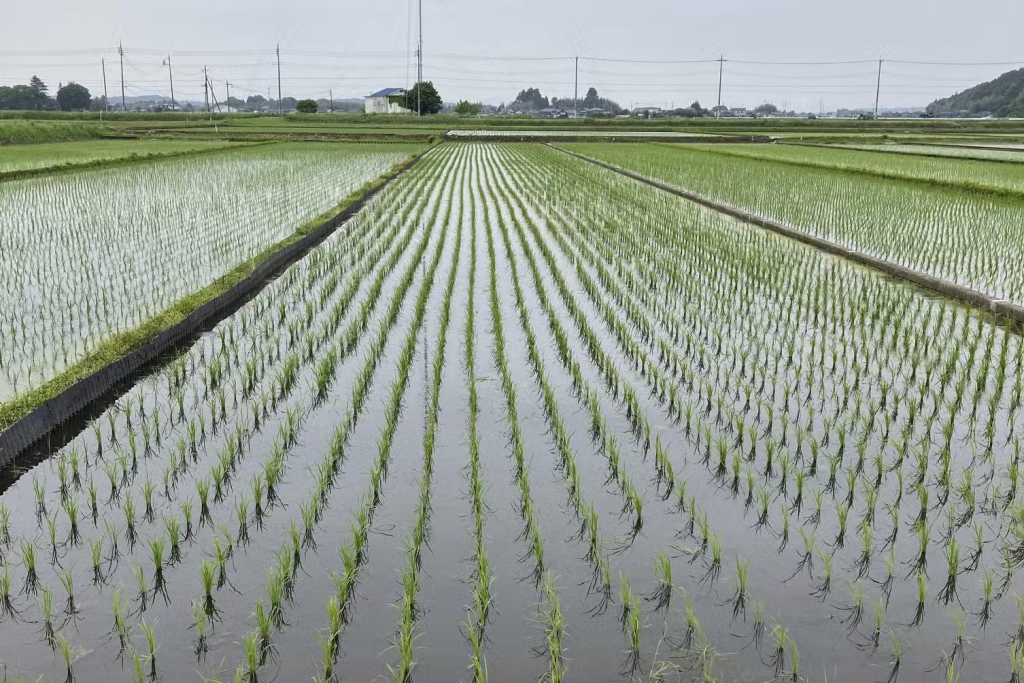Tags
How did Japan’s rice crisis get this far?
The Associated Press

TOKYO — Rice is essential to Japanese culture, tradition and politics. People take pride in the oval-shaped sticky Japonica grain. It is still a staple even though total consumption has fallen over the decades.
But since last summer, prices have soared as supplies have fallen short of demand. The government has long paid farmers to cut back on rice acreage, and change to other crops to keep rice prices relatively high.
To cope with shortfalls this year, the government has released rice reserves. But the grain has been slow to reach supermarket shelves. Anger over that was part of the reason the agriculture minister quit this week.
Consumers are frustrated and wondering where’s the rice?
What’s happening to rice in Japan?
Rice started disappearing from supermarket shelves, and prices surged to twice normal levels since last summer. That was when a warning about a possible “megaquake” triggered panic buying.
The top “Koshihikari” brand now sells for nearly 5,000 yen ($35) per 5 kilograms. Rice stocks at Japan Agricultural Cooperatives and other commercial wholesalers have been 400,000 tons short of last year’s levels. These hit a record low 1.53 million tons as of June, farm ministry data show.
The sense of urgency over shortages has risen now that rice crops have just been planted. Harvests are several months away.
Prime Minister Shigeru Ishiba has pledged to bring the average price down to about 3,000 yen ($20) per 5 kilograms.
“We don’t know why we haven’t been able to push prices lower,” Ishiba said during parliamentary questioning Wednesday. He was asked how exactly his government will resolve the problem. “We first will figure out exactly how much rice there is and where it is.”
He acknowledged current measures aren’t working and blamed “structural problems” of the government’s rice policy.
Experts say last summer’s panic buying just worsened longstanding problems. A sharp rise in tourism and an increase in dining out have raised demand.
Some people started eating more rice after prices of bread and noodles rose when the Russia-Ukraine war pushed wheat prices higher. And the 2023 harvest was relatively poor because of hot weather and pests.
What’s been done so far?
The Agriculture Ministry is under fire for delaying releases of emergency rice reserves. These are normally kept for disasters.
The ministry is also under fire for misjudging the demand-supply balance. So far, only 10 percent of the released rice stocks have reached the market, raising suspicions about what’s happening.
One problem may be a lack of enough milling capacity to turn the stocks of brown rice kept in reserves into the pure white rice that Japanese prefer. But others have accused some wholesalers of hoarding rice to keep prices higher.
So far, the government has done little to investigate and resisted releasing reserves. It fears that prices would fall, said Kazuhito Yamashita, research director at the Canon Institute for Global Studies.
Japan could have avoided the problem by allowing more rice to be planted and exporting more if there were surpluses, he said.
Meanwhile, farmers coping with rising costs say prices aren’t too high.
Ultimately, Japan will need to figure out a long-term strategy since the average age of its farmers is 69. Also, the farming population has fallen by half over the past two decades to 1.1 million in 2024.
What are consumers and retailers doing to cope?
Hiromi Akaba, who lives in Kawasaki, near Tokyo, said that she had no choice but to buy rice at the current high prices. But she added: “If this continues, we will stop eating rice. This could lead to a shift away from rice consumption.”
Many stores are limiting customers to one bag of rice per visit.
Whatever the cause of the shortages, retailers must put rice on the shelves, so some are switching to imports, which usually aren’t popular with finicky Japanese shoppers.
https://business.inquirer.net/527103/how-did-japans-rice-crisis-get-this-farPublished Date: May 24, 2025






